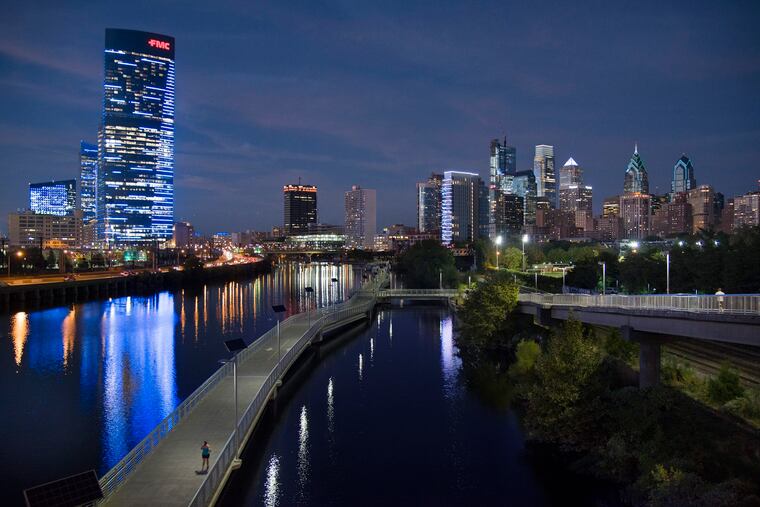Now Philly is GQ’s city of the year — thanks to those working to fix it | Mike Newall
What's encouraging about this latest honor: almost everything that’s propelled Philadelphia onto the national stage this year has been rooted in problem-solving.

I sat in the shiny new Bourse, preparing to dig into my artisanal egg white sandwich, contemplating whether to follow up my repast with an oyster or a bespoke cocktail — because that’s a thing you can do now at the Bourse.
My feast was a celebratory one. Spread out before me was a missive from the heart of America: the latest issue of GQ. And those glossy taste-makers have deemed Philadelphia the city of the year.
Of course they have. This is practically expected now, with our surging confidence, our spruced-up downtown, and our international meme of a hockey mascot. (Yes, by the way, I fully support Gritty’s bid to host the Oscars.) The city that used to see doom and insult at every turn is now making best-of lists — and expecting to top them.
Finally, we have reason to. GQ notes our social-justice-conscious rap stars and sports heroes, our progressive celebrity district attorney, our food scene that doubles as a hub for activism.
Take South Philly Barbacoa’s Cristina Martinez, who was featured in GQ’s article and has become a national culinary figure — on the strength of her unbelievable barbacoa, yes, but also for her advocacy for undocumented immigrants like herself. She’s not just enriching the fabric of our city — she’s leading it. And in doing so she’s become a voice for those who don’t have her platform.
“Someone has to do it. So here I am,” she told the magazine. “I’m not scared.”
She and other advocates are shedding light on all those whom the shine of Center City hasn’t reached. People who live in a Philadelphia that only makes it onto other kinds of lists. We’re the hungriest big city, the poorest, the dirtiest. Every day there’s another bad superlative, it seems.
Take the income gap. Between the city’s poorest and richest neighborhoods — Graduate Hospital and Fairhill — it is $75,466, as my colleague Alfred Lubrano reported last week. Or consider Bob Fernandez’s report on how Philadelphia has the second-worst “broadband penetration” — the number of households with high-speed internet — of any big city in the country. And there’s this stat from 2016 that still stuns me when I think about it: the life expectancy of a child growing up in the city’s most violent neighborhoods is lower than that of a kid growing up in Syria. And it’s 20 years shorter than that of a kid born in Society Hill.
All these testaments to inequality.
And all of this takes place as our business district explodes. According to my colleague Ellie Silverman, hundreds of thousands of square feet of retail space have been added in the blocks around the Inquirer’s offices alone over the last few years — including at the Bourse, which I loved before they added the ritzy rotisserie stands.
And over the next few years, Silverman reported, Center City can expect nearly $1 billion in investments and 1.2 million square feet of retail. That’s a lot of fancy egg white sandwiches.
Look, this column has been a booster for this city since I began writing it, from the pope’s visit in 2015 to our Amazon bid to a certain orange chaos muppet to, now, this GQ issue. But you can’t do this job without confronting all that drags us down.
That’s what’s encouraging about this latest honor. In years past, we’ve essentially been celebrated for throwing good parties — the DNC, the papal visit, the NFL draft.
But almost everything that’s propelled Philadelphia onto the national stage this year has been rooted in problem-solving, in bridging the ever-widening gap between our two realities: one shiny, one suffering. We’ve been a broken city for so long that our solutions — and the people championing them — are putting us into the spotlight.
And that’s the best kind of list to be on.